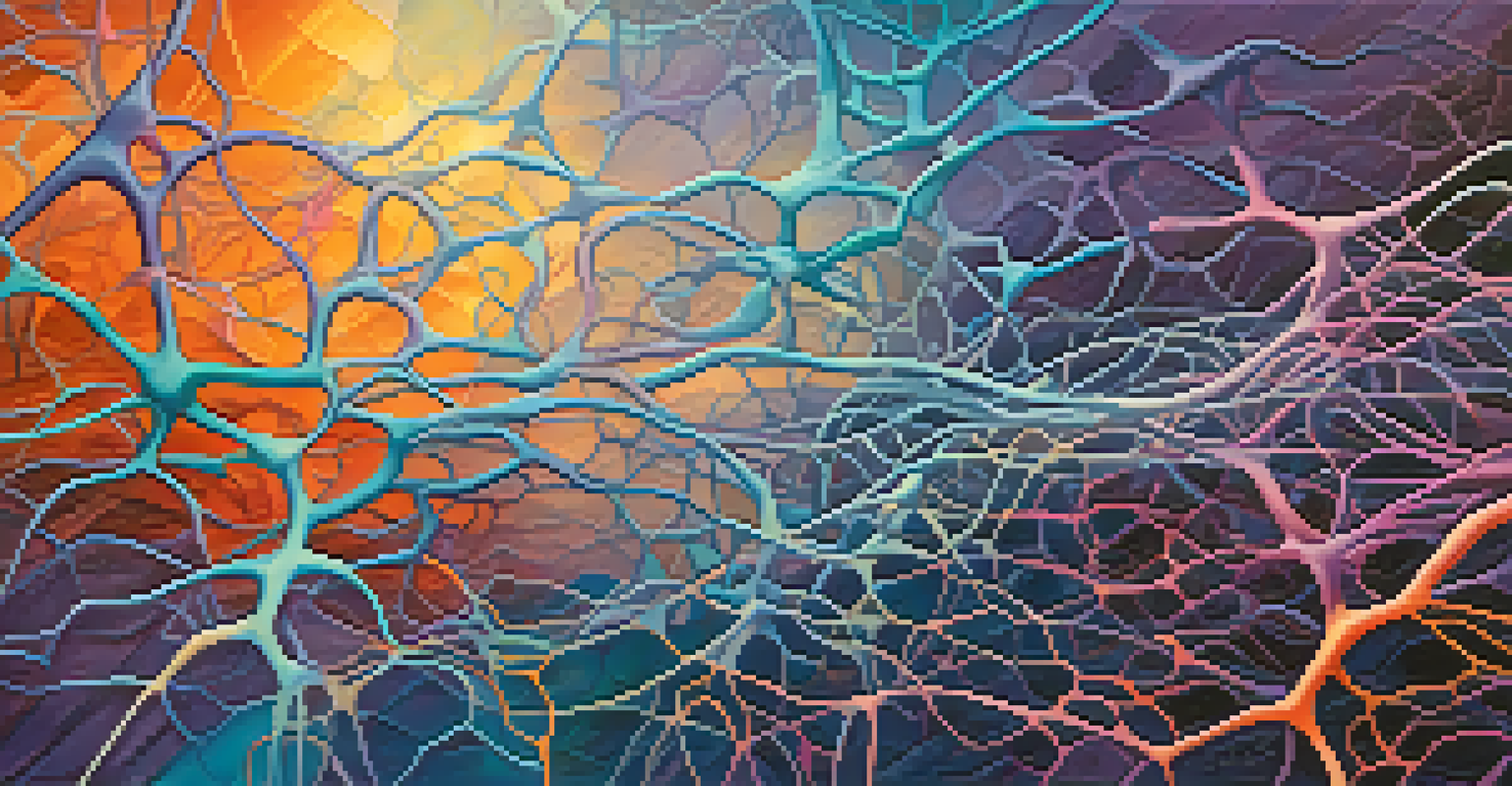Entheogens: Catalysts for Emotional Healing and Growth

Understanding Entheogens: What Are They?
Entheogens are substances, often derived from plants, that are used in a spiritual or therapeutic context. These compounds can induce altered states of consciousness, allowing individuals to explore their inner selves more deeply. Think of them as keys that unlock doors to parts of our psyche that we might not otherwise access.
The mind is everything. What you think you become.
Historically, cultures around the world have employed entheogens in ceremonies, rituals, and healing practices, recognizing their potential to foster connection with the divine or facilitate emotional breakthroughs. Examples include psilocybin mushrooms, ayahuasca, and peyote. Each of these has its own unique properties and effects, but they all share a common trait: the ability to shift perception.
In recent years, interest in entheogens has surged, not just in spiritual circles but also in mainstream mental health discussions. As researchers and therapists explore their therapeutic potential, these substances are being seen as promising tools for addressing various emotional and psychological challenges.
The Science Behind Emotional Healing with Entheogens
Research indicates that entheogens can promote neuroplasticity, which is the brain's ability to reorganize itself by forming new neural connections. This means that they might help reset thought patterns and emotional responses that contribute to mental health issues. Imagine your brain as a tangled ball of yarn; entheogens could help untangle those knots, allowing for clearer thought and emotional clarity.

Studies have shown that substances like psilocybin can alleviate symptoms of depression and anxiety, particularly in patients who have not responded to traditional treatments. The experiences often lead to profound insights, helping individuals confront and process deep-seated traumas or feelings. This form of guided introspection can be transformative, enabling lasting change.
Entheogens Foster Emotional Healing
Entheogens promote neuroplasticity, helping individuals reset harmful thought patterns and facilitating emotional breakthroughs.
Moreover, entheogens can create a sense of interconnectedness, which can be particularly healing for those who feel isolated or disconnected from others. This shared experience can foster empathy, compassion, and a renewed sense of purpose, all crucial elements for emotional well-being.
Personal Growth Through Entheogenic Experiences
Engaging with entheogens can catalyze significant personal growth, as users often report shifts in perspective and self-understanding. These experiences can challenge one's beliefs and encourage a deeper exploration of identity, values, and life purpose. Think of it as a journey into the depths of your own mind, revealing insights that might have been buried under layers of everyday life.
The greatest discovery of my generation is that a human being can alter his life by altering his attitude of mind.
Many individuals describe entheogenic experiences as life-changing, often leading to increased creativity, improved relationships, and greater emotional resilience. These shifts can empower people to pursue their dreams, tackle challenges head-on, and embrace change with open arms. It's like having a reset button for your emotional and mental landscape.
However, it’s essential to approach these experiences with respect and intention. Proper preparation, integration, and sometimes guidance from experienced practitioners can help ensure that the journey is safe and beneficial. Just like any meaningful journey, having a roadmap can make all the difference.
The Role of Set and Setting in Entheogenic Use
One of the most critical factors influencing the effects of entheogens is the concept of 'set and setting.' 'Set' refers to the mindset of the individual, while 'setting' pertains to the physical and social environment in which the experience occurs. Together, they can greatly influence the outcome of the journey.
For example, approaching an entheogenic experience with an open mind and a positive attitude can lead to more profound insights and a sense of connection. Conversely, if someone is anxious or in a chaotic environment, the experience might become overwhelming or challenging. It's akin to going on a hike; having the right mindset and a beautiful trail makes all the difference in how much you enjoy the journey.
Set and Setting Matter
The mindset and environment during entheogenic experiences significantly influence their outcomes, highlighting the importance of a supportive atmosphere.
Creating a supportive, safe, and comfortable environment is essential for those looking to explore these substances. Whether alone or with a trusted guide, establishing a conducive atmosphere can help facilitate healing and growth, ensuring that the experience is as beneficial as possible.
Integration: Making Sense of Your Experience
After an entheogenic experience, integration is crucial for translating insights into everyday life. This process involves reflecting on the experience, understanding its significance, and applying any lessons learned. Think of it as the 'after-party' where you sift through the memories to see how they can inform your future.
Journaling, therapy, or sharing experiences with trusted friends can be helpful tools during integration. These practices can provide clarity, helping to solidify insights and ensure they translate into actionable change. It's like piecing together a puzzle; each reflection adds a new piece, revealing a clearer picture of your journey.
Integration isn't a one-time event but an ongoing process that may unfold over weeks or even months. It's about weaving the experience into the fabric of your daily life, allowing the emotional healing and growth to flourish over time.
Potential Risks and Ethical Considerations
While entheogens offer many benefits, it's essential to acknowledge potential risks and ethical concerns. Not everyone may respond positively to these substances, and pre-existing mental health conditions can complicate their use. It's crucial to approach entheogens with caution and respect, understanding that they are not a cure-all solution.
Additionally, the context in which entheogens are used matters significantly. Ethical considerations arise when discussing their use in therapeutic settings versus recreational contexts. It's important to ensure that individuals are well-informed and prepared, prioritizing safety and emotional well-being throughout the process.
Integration is Key to Growth
Post-experience integration is essential for translating insights into everyday life, allowing emotional healing and personal growth to flourish.
Furthermore, as interest in entheogens grows, so does the need for responsible use and education. Creating a culture of informed consent and respectful practices can help mitigate risks and ensure that entheogenic experiences are beneficial and transformative.
The Future of Entheogens in Therapy and Society
As research on entheogens continues to expand, their potential applications in therapy and society are becoming more apparent. With a growing body of evidence supporting their effectiveness, these substances may soon become more widely accepted in clinical settings. Imagine a future where therapy includes guided entheogenic experiences, helping individuals navigate their emotional landscapes in meaningful ways.
Many advocates believe that integrating entheogens into mental health practices could revolutionize the field, offering new avenues for healing. As society gradually shifts towards a more holistic approach to mental health, the acceptance of these substances may pave the way for innovative treatment options.

However, this future also calls for responsible practices and thorough research to ensure safety and efficacy. Balancing innovation with ethical considerations will be essential as we navigate the evolving landscape of entheogens in therapy and society.